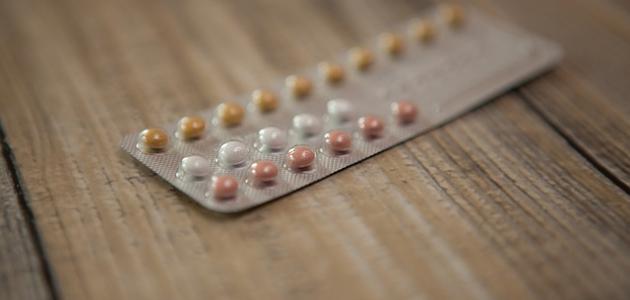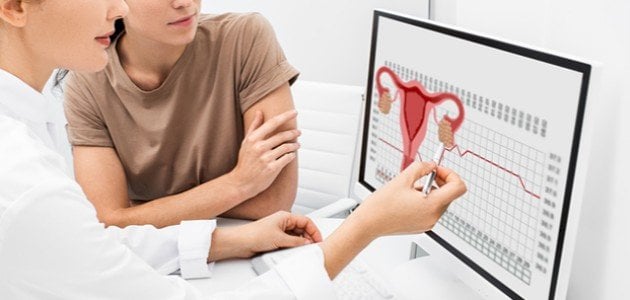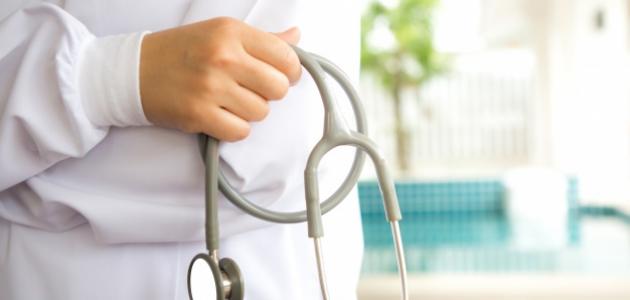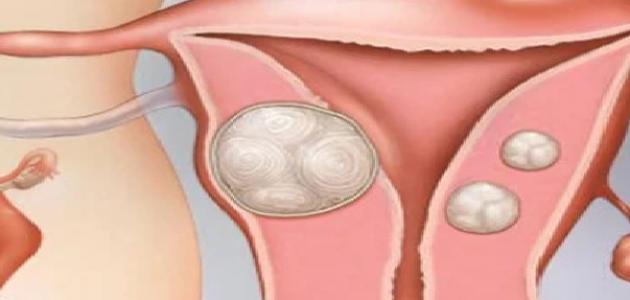Tips and instructions to relieve the symptoms of polycystic ovary syndrome
Making some changes to the lifestyles of women with polycystic ovary syndrome (in English: Polycystic ovary syndrome) contributes to controlling symptoms, improving fertility, in addition to reducing long-term complications. Below is a statement of the most important tips and guidelines that must be followed in this case:
- Reducing weight in cases of obesity: Reducing weight can alleviate the symptoms of polycystic ovary syndrome and control many of the problems associated with this syndrome. Such as high blood pressure and diabetes; This helps reduce blood sugar levels and improve the body’s ability to use the hormone insulin. In this context, it is indicated that reducing weight by 10% would increase the regularity of the menstrual cycle and improve the woman’s ability to become pregnant, and sometimes it may be Weight loss alone is able to return hormonal levels to their normal range, and this is noticeable through the disappearance of symptoms or a reduction in their severity. Weight loss also contributes to reducing hair growth and the risk of increasing the thickness of the uterine lining. It is worth mentioning that reducing weight would increase the effectiveness of the medications that are prescribed. The doctor treats cases of polycystic ovary syndrome, which is useful in improving fertility. It is mentioned that weight loss can be achieved by following a healthy diet and exercising regularly, and specialists can be sought to develop the appropriate plan to achieve and maintain a healthy weight. In this context, the effect of exercise is not indicated. It is limited only to weight, but it has many other benefits. Exercise can reduce the feeling of bloating that accompanies the symptoms of this syndrome. However, reducing weight may not be of real benefit to women with polycystic ovary syndrome who have a normal weight.
- Limit starchy or sugary foods: Since having polycystic ovary syndrome can cause high blood sugar levels, it is recommended to limit starchy or sugary foods, and replace them with foods and meals that contain large amounts of fiber, as this will cause the blood sugar level to rise slowly.
- Exercise and follow a healthy diet: This would also reduce cholesterol levels and improve the problem of sleep apnea. This problem is represented by a disturbance in the breathing process and its interruption during sleep.
- Quit smoking and tobacco products: This plays a role in reducing androgen levels.
Read also:Relieve menstrual pain
Medical treatment of ovarian cysts
There are many medical treatments available to control the condition of ovarian cysts and its symptoms, and the most prominent of these treatments can be described as follows:
Treatments for regulating the menstrual cycle
Although some women suffer from menopause or do not occur frequently, they do not prefer to use any medical treatment to control this. In this context, it is indicated that menopause for long periods of time may cause an increased risk of uterine cancer, and this is what calls for taking appropriate measures. Which would work to regulate the menstrual cycle, and the following is a statement of the most prominent drug treatments that may be prescribed in these cases:
- Combined contraceptives: (in English: Combination Birth Control), which is available in the form of oral tablets, skin patches, or vaginal rings, and works to reduce androgen production and regulate estrogen production because it contains a mixture of the hormones estrogen (in English: Estrogen) and progestin (in English: Progestin). It is worth noting that regulating hormone levels in a woman’s body plays a role in reducing the risk of endometrial cancer, controlling abnormal bleeding, and reducing hair growth and acne.
- Progestin therapy: (in English: Progestin therapy), which is available in the form of oral pills or an intrauterine device (in English: Intrauterine Device), and it is noteworthy that these treatments do not work to improve the levels of the androgen hormone and are not able to completely prevent pregnancy, but they are effective in regulating the cycle. Monthly and reduce the possibility of endometrial cancer. In this case, progestin is taken for 10-14 days every one to two months.
If one of the previous methods is not suitable for the woman, she may be subjected to hysterosalpingography on a regular basis in order to detect any diseases or disorders in their early stages. Although birth control pills are considered safe and effective, starting to use them may result in the appearance of Some side effects, especially during the first months of use; This is represented by menopause or irregularity, or spotting of blood during the cycle that separates two consecutive menstrual cycles, or nausea, or breast pain when touched, or bloating. It is worth mentioning that these side effects are temporary and go away with time, and they are likely to occur in women. All women who use these pills, regardless of whether the woman suffers from polycystic ovary syndrome or not. In this context, it is noteworthy that some women suffer from weight gain when using birth control pills, but the possibility of this happening is considered small when using low and available doses. In many formulations currently available in pharmacies, in this context, an increased risk of blood clots in the legs or lungs is indicated when using birth control pills by elderly women, smokers, or those who are overweight.
Read also:Causes of low menstrual bleeding
Fertility treatments
A woman with polycystic ovary syndrome still needs to use contraception if she is certain that she does not want to become pregnant during the upcoming periods, despite low fertility in most women with this condition. In general, the possibility of achieving pregnancy depends on the number of times the woman ovulates; Ovulation occurs at irregular intervals in some women, while others suffer from its complete cessation. In general, the most prominent treatments that improve fertility and increase the possibility of pregnancy, which are prescribed in cases of polycystic ovary syndrome, can be described as follows:
- Pharmacological treatments: Certain medications are prescribed to help improve the occurrence of ovulation after ruling out other causes that underlie infertility in both partners, as they help release eggs from the ovaries naturally, and despite their effectiveness, their use may result in the appearance of some side effects. Such as the secretion of large amounts of hormones, pregnancy with more than one fetus, increased ovarian stimulation, abdominal bloating, and feeling of pelvic pain. In general, the most prominent drug treatments prescribed to improve fertility in women who suffer from polycystic ovary syndrome can be described as follows:
- Clomiphene: This medication is considered an anti-estrogen and is taken orally during the first half of the menstrual cycle.
- Letrozole is a drug originally used to treat breast cancer, and in this case it is used to stimulate the ovaries.
- Gonadotropins, which are hormonal medications given by injection.
- Metformin, which is one of the oral medications used to treat type 2 diabetes. This medication works to reduce insulin levels and improve the body’s resistance to this hormone. The doctor recommends adding metformin to clomiphene if the latter does not work. It alone helps women achieve pregnancy, and it is worth noting that metformin can help reduce weight and slow the progression of type 2 diabetes in people with pre-diabetes. It is worth stating that metformin is not used to lose weight. Primarily weight, but it has been found that metformin contributes to greater weight loss when added to the treatment plan for women with polycystic ovary syndrome who follow a low-calorie diet. Therefore, it can be said that it is not possible to rely on metformin alone to reduce weight and requires... The matter is to adhere to a suitable diet and exercise, and it is necessary to adhere to this plan due to the possibility of regaining the excess weight later.
- IVF technology: Also known as artificial insemination (in English: In vitro fertilization), this option is resorted to if drug treatments do not succeed in achieving pregnancy. It is noteworthy that the probability of achieving pregnancy using IVF technology is considered higher compared to using medications alone, and controlling the number of embryos and reducing the possibility of Pregnancy with more than one fetus is higher in cases of adopting the IVF method to achieve pregnancy, and regarding its principle, it is based on fertilizing the egg with sperm in the laboratory and then the egg is re-placed in the uterus so that implantation occurs and the embryo develops later.
- surgery: This option is resorted to if other treatments do not succeed in improving fertility and achieving pregnancy, and one of the surgeries that is resorted to in this case is ovarian drilling. Which consists of using a laser or a fine needle heated with electricity in order to form a number of holes in the surface of the ovary. It is believed that women with polycystic ovary syndrome have an increased thickness of the outer layer of the ovary, which prevents ovulation from occurring naturally, and therefore this surgery It will stimulate ovulation, and it should be noted that it takes a period ranging between 6-8 months after undergoing surgery for the body to regain its ability to ovulate.
Read also:What are the causes of menstrual progression?
Treating the problem of excess hair
In fact, there is no specific treatment or method that can solve the problem of excess hair associated with polycystic ovary syndrome completely and effectively for everyone, but there are some techniques that contribute to alleviating this problem and reducing its impact. These include: body hair bleaching, plucking, waxing, shaving, or liquids and creams designated for hair removal, which can be relied upon during the period it takes for the treatment to take effect. Lasers may also be used to reduce hair growth. In general, the techniques and methods adopted in this treatment can be described. Controlling the problem of excess hair in women with polycystic ovary syndrome is as follows:
- Eflornithine cream: (English: Eflornithine), which helps remove unwanted facial hair.
- Oral contraceptives: It is worth mentioning that its effect is considered simple and is not noticeable before continuing to use it for several months. According to the principle of its work, it is based on reducing the production of the androgen hormone, which causes increased hair growth.
- Spironolactone medication: (In English: Spironolactone), the principle of this drug is based on reducing unwanted hair growth by reducing the production of the male hormone and its effect, and its use may result in some side effects; Among them: increased urine production in the body, and low blood pressure, which may result in fainting in some cases. In this context, the importance of using contraceptives throughout the period of using spironolactone is indicated, given that this drug is unsafe for the fetus and may cause fetal deformities in the fetus. If taken during pregnancy.
- Cyproterone medication: (in English: Cyproterone), and as is the case with the drug spironolactone, cyproterone works to reduce unwanted hair growth by reducing the effect of the male hormone, and cyproterone is considered one of the powerful forms of progestin that is effective in reducing unwanted hair growth in women by a percentage 50-75%, according to the “Msdmanuals” website.
- Drugs directed to act on gonadotropin-releasing hormone: (In English: Gonadotropin-Releasing Hormone), known by its abbreviation (GnRH), as it has been found that medications from two groups of agonists (in English: agonists) and receptor blockers (in English: Antagonists) of this hormone are effective in reducing unwanted hair growth by inhibiting the production of hormones. Sexual activity by the ovaries, and like other medications, their use may result in some side effects. Including bone loss, which may cause osteoporosis.
- Electrolysis technology: (English: Electrolysis), this type of procedure requires undergoing several sessions during which a small needle is inserted into each hair follicle, so that the needle releases an electrical pulse that will harm and ultimately destroy these follicles, thus reducing hair growth.
Other treatments
The doctor may prescribe other types of medications to treat some other problems associated with polycystic ovary syndrome, the most prominent of which will be described as follows:
- Weight loss medications that are prescribed in cases of obesity, the most prominent of which is Orlistat.
- Treatments for high blood cholesterol, including statins, which work to reduce cholesterol levels in the blood.
- Acne treatments, including benzoyl peroxide, Tretinoin cream, and oral antibiotics that are applied topically to the skin.
- Treatments used for cases of acanthosis nigricans. This condition is represented by the appearance of skin patches that are thicker and darker in color than the rest of the skin. This condition is often associated with diabetes or pre-diabetes. This condition can be controlled and alleviated. Its symptoms are caused by using topical treatments applied directly to the skin. Which includes: urea at a concentration of 15%, alpha hydroxy acids, and salicylic acid. It is worth mentioning that metformin can alleviate the symptoms of this condition as well.
surgery
A woman with polycystic ovary syndrome may be subjected to certain types of surgeries, including the following:
- Cyst aspiration surgery, which aims to remove fluids inside ovarian cysts.
- Bariatric surgery, which is considered effective in losing weight in certain cases of obesity.
- Surgeries to remove the uterus or ovaries. Some women may suffer from severe symptoms of polycystic ovary syndrome, and if they do not have a desire to become pregnant in the future, they may undergo a surgery known as hysterectomy or bilateral salpingo-oophorectomy. ; These are surgeries that initially remove the ovaries or the uterus, such that a hysterectomy involves removing part of the uterus or the entire uterus, while an ovarian removal involves removing one or both of the ovaries.









